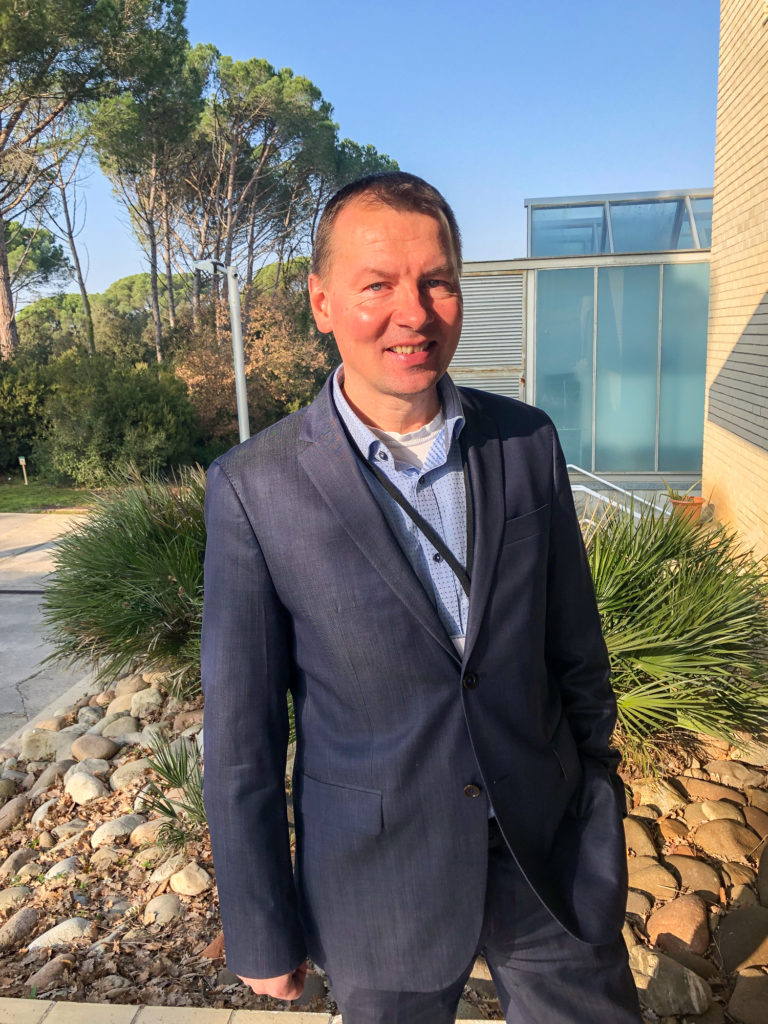End-users are the key players in E-LAND
By Mari Kristine Buckholm, Smart Innovation Norway 28. February 2019
In the new EU Horizon 2020 project, E-LAND, the project partners aim to understand what drives end-users to change their behavior, to take in new technologies, as well as how they influence each other.
“The purpose of the E-LAND project is to introduce new technologies to communities to see how we can make them work together and how we can make people incorporate these new technologies into their daily lives. In addition, we want to understand how they can be used in implementation into actual business cases,” says Thomas Mikkelsen of GECO Global, Work Package Leader for WP2 Community Building and End-User Involvement.
- Read also: Successful E-LAND kickoff meeting in Girona
The European-funded Horizon 2020 project, E-LAND, targets to provide a synergistic solution between the technological, societal and business challenges that the energy sector faces.
End-users at the core
The main concept is the E-LAND toolbox – a modular set of methodologies and ICT tools to optimize and control multi energy islands and isolated communities. The toolbox can be customized to meet local requirements and expandable to incorporate new tools as new challenges arise.

Thomas Mikkelsen of GECO Global is Work Package Leader for WP2 Community Building and End-User Involvement in E-LAND.
The E-LAND toolbox will be validated in 3 different pilot cases in Europe through real-life implementation and in 2 pilot cases in India through simulation with real data. All pilot cases are built upon existing local resources, reflecting to the case-specific targets for development and addressing the specific local challenges.
“The pilot end-users will be the core of the project. As I see it, everything will evolve around them. We will have to understand what drives customers to change their behavior, to take in new technologies, and how they influence each other and people outside of the pilot communities,” comments Mikkelsen.
He adds:
“As part of this work, we are also aiming at developing a Common Impact Model, which can help future initiatives by providing a framework for analyzing the societal conditions and give recommendations for engaging the local communities.”
Real-life testing
He explains that end-users will be the most important players in the project because they are the ones who take the project live. They will be responsible for providing answers to the question: Could this be implemented into real life?
“The project will tell us a lot about why people change behavior, why they incorporate new technologies, and why they want to take the opportunity to actually change what they have been doing, maybe for a lifetime,” notes Mikkelsen.
In the E-LAND project, WP2 Community Building and End-User Involvement focuses on engaging the local actors and citizens from day one of the project. Local actors will not only participate in the actual piloting phase, but the project will include them in the E-LAND toolkit development to ensure the development of solutions which are not only accepted but desired by the local community.
“I expect the end-users to have an interest in what is going on, what is going to happen, especially in the beginning of the project. I believe they would like to be engaged, to participate and to be listened to, but it will be up to the project partners to make sure that their participation and engagement lasts,” emphasizes Mikkelsen.
The “Communities” term
The project consortium expects E-LAND to have an impact on society in several ways, for example by enhancing the involvement of local energy consumers and producers, creating energy communities in the development and the operation of local energy systems, and testing new business models.
“Communities are important in the E-LAND project because it will enable us to get away from only focusing on individuals or technologies. We are also focusing on interactions between people. We have realized over the years that to make an induced change you need to engage a larger number of people – and to make them work together. Right now, people relate to being a part of something,” Mikkelsen points out.
He explains that the term “Communities” in the E-LAND context is related to understanding every influencer, both the people in each pilot but also the people related to the activities within the project. In a harbor, it would be all the ships and people coming into the port. At a university, it would be all the people that are living there and using the facilities. The term even includes the legislation and the governmental procedures related to tackling and introducing new technologies.
“It is a community whether you like it or not, it is not just the individual users, not only the technology; it is all of us – and that means everything – and everybody.”
Social media
E-LAND updates

The E-LAND project aims to develop and demonstrate tools for energy systems to overcome the technical, business, and societal challenges associated with the creation of… (1 year ago)

E-LAND exploitation enhancement activities kickstarted for the final project year Multiple events were executed and many more are planned for the E-LAND project’s final year.… (1 year ago)

A central pillar of the E-LAND project's is risk management. The Norwegian consortium member, Institute for Energy Technology (IFE), implemented a risk management approach to… (2 years ago)

E-LAND H2020 is working with creating a toolbox that is designed to optimize and control multi-energy islands and isolated communities. The toolbox is structured in… (2 years ago)

Smart Innovation Norway together with the University of St. Gallen have developed a series of workshops that began in June 2021 and focused on the… (2 years ago)

About the pilot site: Port of Borg is situated in an industrial area on a small peninsula called Øra just outside Fredrikstad, Norway. Port work… (2 years ago)

Since the mid-1960s, the township of Auroville in Southern India has been striving for sustainable living and the realization of human unity in diversity. In… (2 years ago)